Creating a flawless hairstyle requires skill and knowledge, but even the best intentions can lead to Common Hairstyling Mistakes. From overuse of heat tools to neglecting regular trims, these missteps can damage your hair. Learn how to avoid these errors and keep your locks looking their best with our helpful guide.
Common Hairstyling Mistakes
Using Too Much Heat
Mistake: Overusing heat styling tools such as straighteners, curling irons, and blow dryers can cause severe damage to your hair. Excessive heat can lead to dryness, split ends, and breakage.
Solution:
- Heat Protectant Sprays: Always apply a heat protectant spray or serum before using any heat styling tools. These products create a protective barrier that minimizes damage.
- Lower Heat Settings: Use the lowest effective heat setting on your styling tools. High temperatures are not always necessary and can cause more harm.
- Limit Heat Styling: Try to limit the use of heat styling tools to a few times a week. This gives your hair a chance to recover and reduces cumulative damage.
- Air-Dry Whenever Possible: Allow your hair to air-dry naturally instead of using a blow dryer. If time is an issue, use the blow dryer on a cool or low-heat setting.
- Regular Conditioning: Keep your hair moisturized with regular conditioning treatments. Deep conditioning masks once a week can help repair and strengthen heat-damaged hair.
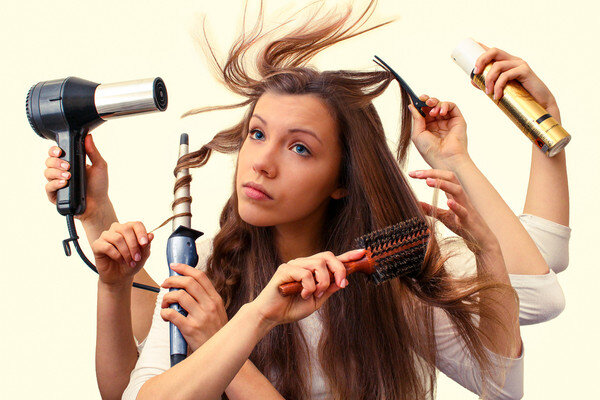
Skipping Regular Trims
Mistake: Avoiding regular haircuts can lead to split ends, breakage, and an overall unhealthy appearance. Over time, split ends can travel up the hair shaft, causing more extensive damage.
Solution:
- Schedule Regular Trims: Make a habit of scheduling hair trims every 6-8 weeks. Regular trims help prevent split ends and keep your hair looking neat and healthy.
- Monitor Your Hair’s Condition: Pay attention to your hair’s condition. If you notice split ends or a lack of shape, it might be time for a trim, even if it hasn’t been the full 6-8 weeks.
- Communicate with Your Stylist: Let your hairstylist know your hair goals. They can help you decide the appropriate frequency and amount to trim, ensuring you maintain length while keeping your hair healthy.
- Prevent Split Ends: Use leave-in conditioners and serums to keep your hair moisturized and reduce the risk of split ends forming between trims.
- Be Gentle with Your Hair: Handle your hair gently to minimize breakage and split ends. Use a wide-tooth comb, avoid excessive brushing, and refrain from using harsh hair ties.
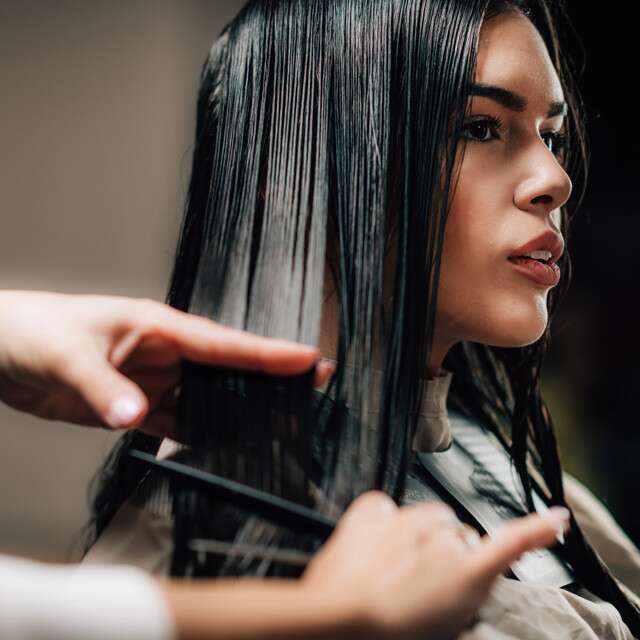
Incorrect Brushing Techniques
Mistake: Brushing hair when it’s wet or using the wrong type of brush can cause breakage. Wet hair is more fragile and prone to stretching and snapping.
Solution:
- Use a Wide-Tooth Comb on Wet Hair: When your hair is wet, use a wide-tooth comb to detangle it gently. Start from the ends and work your way up to the roots. This method reduces the risk of breakage and minimizes stress on your hair.
- Choose the Right Brush for Your Hair Type:
- Fine or Thin Hair: Use a soft-bristle brush or a brush with flexible bristles to avoid breaking delicate strands.
- Thick or Curly Hair: Opt for a detangling brush or a wide-tooth comb to manage knots without causing damage.
- Wet Hair: If you prefer using a brush, select one specifically designed for wet hair, like a wet brush, which has flexible bristles to minimize damage.
- Be Gentle: Avoid pulling or yanking on your hair. Take your time to detangle knots carefully, using your fingers to gently separate particularly stubborn tangles before using a comb or brush.
- Brush in Sections: Divide your hair into manageable sections before brushing. This approach helps ensure you detangle each part thoroughly and reduces the risk of pulling and breaking hair.
- Avoid Over-Brushing: Brushing your hair excessively can cause friction and breakage. Brush your hair only as much as needed to style and detangle it.
- Conditioning and Moisturizing: Keep your hair well-conditioned and moisturized. This reduces tangling and makes it easier to brush through your hair.
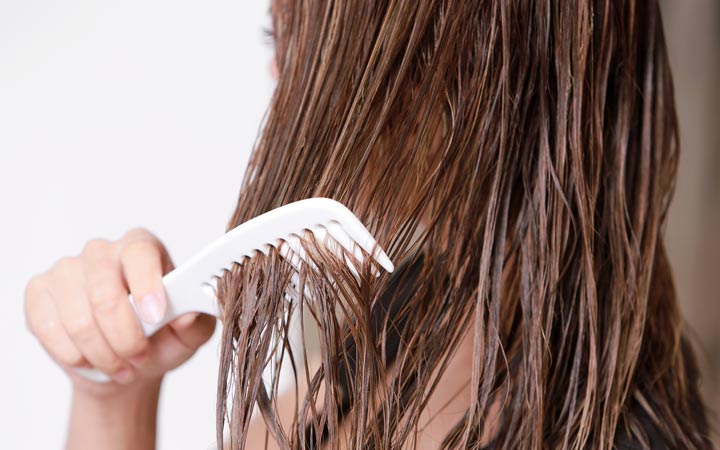
Overwashing Hair
Mistake: Washing your hair too frequently can strip it of its natural oils, leading to dryness, brittleness, and a lack of natural shine. Overwashing can also cause your scalp to overproduce oil, making your hair appear greasy faster.
Solution:
- Wash 2-3 Times a Week: Aim to wash your hair 2-3 times a week, or adjust based on your hair type and lifestyle. This frequency helps maintain the natural balance of oils in your hair and scalp.
- Understand Your Hair Type:
- Oily Hair: If your hair is naturally oily, you might need to wash it more frequently, but still try to limit it to every other day.
- Dry or Curly Hair: These hair types benefit from less frequent washing, around 1-2 times a week, as they need more natural oils to stay moisturized.
- Normal Hair: Washing every 2-3 days usually suffices.
- Use Dry Shampoo: In between washes, use dry shampoo to absorb excess oil and refresh your hair. This can extend the time between washes and keep your hair looking clean.
- Gentle Shampoo and Conditioner: Choose a gentle, sulfate-free shampoo that won’t strip your hair of its natural oils. Follow with a conditioner suited to your hair type to keep it moisturized and manageable.
- Scalp Care: Take care of your scalp by massaging it gently during washing to promote circulation and remove any buildup. A healthy scalp contributes to overall hair health.
- Avoid Hot Water: Use lukewarm or cool water to wash your hair. Hot water can strip your hair of natural oils and cause dryness.
- Protective Hairstyles: When possible, wear protective hairstyles that reduce exposure to environmental elements and the need for frequent washing.

Ignoring Your Hair Type
Mistake: Using products and styling techniques not suited for your specific hair type can lead to poor results, such as frizz, dryness, lack of volume, or excessive oiliness. Each hair type has unique needs that should be addressed to maintain healthy, beautiful hair.
Solution:
Identify Your Hair Type: Determine your hair type to better understand its needs:
- Straight Hair (Type 1): Tends to get oily easily, requires lightweight products that won’t weigh it down.
- Wavy Hair (Type 2): Prone to frizz, benefits from lightweight moisture and frizz control products.
- Curly Hair (Type 3): Needs more moisture and definition, benefits from hydrating and curl-enhancing products.
- Coily Hair (Type 4): Very dry and fragile, requires intense moisture and protective styling.
Use Products Designed for Your Hair Type: Choose shampoos, conditioners, and styling products formulated specifically for your hair type:
- Straight Hair: Use volumizing or lightweight hydrating products.
- Wavy Hair: Opt for products that enhance waves and control frizz.
- Curly Hair: Look for moisturizing, curl-defining, and anti-frizz products.
- Coily Hair: Choose deeply moisturizing, leave-in conditioners, and oils for added hydration and protection.

Tailor Your Styling Routine:
- Straight Hair: Avoid heavy oils and creams that can make hair look greasy. Use a heat protectant when styling with heat tools and avoid over-styling.
- Wavy Hair: Use a diffuser when blow-drying to enhance natural waves, and apply lightweight mousse or gel to define waves.
- Curly Hair: Use a wide-tooth comb or your fingers to detangle, apply curl creams or gels to define curls, and avoid brushing dry hair to prevent frizz.
- Coily Hair: Regularly deep condition and use protective styles to minimize breakage. Apply leave-in conditioners and oils to maintain moisture and use a satin scarf or pillowcase to reduce friction while sleeping.
Adjust for Specific Needs:
- Fine Hair: Avoid heavy products that can weigh hair down; opt for volumizing and light-hold products.
- Thick Hair: Use moisturizing and smoothing products to manage volume and frizz.
- Color-Treated Hair: Use color-safe, sulfate-free products to maintain color and prevent dryness.
Consult a Professional: Seek advice from a hairstylist who can recommend the best products and techniques for your specific hair type and any concerns you may have, such as damage, dryness, or lack of volume.
Neglecting Scalp Health
Mistake: Focusing solely on the hair and neglecting the scalp can lead to various issues such as dandruff, itchiness, and even hair loss. A healthy scalp is the foundation for healthy hair.
Solution:
Regular Scalp Massages:
- Stimulate Blood Flow: Massage your scalp regularly to stimulate blood flow, which can promote hair growth and improve scalp health. Use your fingertips to gently massage in circular motions for a few minutes each day.
- Relaxation: Scalp massages can also help reduce stress, which can be beneficial for overall scalp and hair health.
Scalp Treatments:
- Dandruff and Dry Scalp: Use scalp treatments specifically designed for issues like dandruff or dry scalp. Look for products containing ingredients like salicylic acid, zinc pyrithione, or ketoconazole.
- Oily Scalp: If you have an oily scalp, use products with ingredients like tea tree oil, witch hazel, or charcoal to help balance oil production.
Gentle Shampoos:
- Avoid Harsh Ingredients: Choose gentle, sulfate-free shampoos that won’t strip your scalp of its natural oils. Harsh shampoos can cause dryness and irritation.
- Regular Cleansing: Maintain a regular shampooing routine to keep your scalp clean and free of buildup. Adjust the frequency based on your scalp’s needs.
Exfoliate Your Scalp:
- Remove Buildup: Use a scalp scrub or exfoliating shampoo once a week to remove dead skin cells and product buildup. This helps to keep your scalp clean and allows for better absorption of scalp treatments.
- DIY Options: You can also create your own scalp scrub using ingredients like sugar or salt mixed with a bit of your regular shampoo.
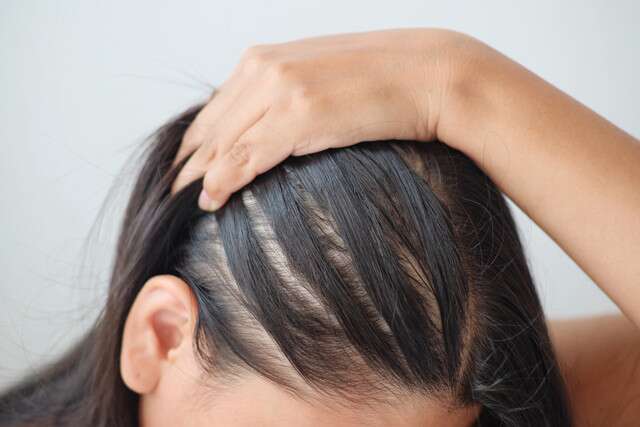
Hydrate Your Scalp:
- Moisturizing Products: Use moisturizing scalp treatments or oils, such as jojoba oil or aloe vera, to keep your scalp hydrated and prevent dryness.
- Hydration: Ensure you’re drinking enough water daily to keep your body and scalp hydrated from within.
Healthy Diet:
- Nutrients for Scalp Health: A balanced diet rich in vitamins and minerals, such as vitamin E, omega-3 fatty acids, and biotin, supports scalp health and promotes healthy hair growth.
- Hydration: Stay hydrated by drinking plenty of water, which helps maintain the overall health of your scalp and hair.
Protect Your Scalp:
- Sun Protection: Protect your scalp from sun exposure by wearing hats or using hair products with UV protection.
- Avoid Tight Hairstyles: Avoid hairstyles that pull on the scalp, as they can cause tension and lead to hair loss.
Using the Wrong Products
Mistake: Using products that are too heavy or not suitable for your hair type can weigh hair down, cause buildup, and lead to an unhealthy appearance. Each hair type requires specific products to maintain its health and look its best.
Solution:
Identify Your Hair Type:
- Fine Hair: Often needs lightweight, volumizing products that won’t weigh it down.
- Thick Hair: Requires more moisturizing products to manage volume and frizz.
- Curly Hair: Needs hydrating and curl-enhancing products to maintain definition and moisture.
- Color-Treated Hair: Benefits from color-safe, sulfate-free products that prevent fading and damage.
Choose Lightweight, Non-Greasy Products for Fine Hair:
- Shampoo and Conditioner: Use volumizing or lightweight hydrating formulas.
- Styling Products: Opt for light mousses, sprays, or serums that add volume without heaviness.
- Avoid: Heavy oils, thick creams, and any products that can weigh hair down.
Opt for Moisturizing Formulas for Thick or Curly Hair:
- Shampoo and Conditioner: Choose deeply moisturizing and hydrating formulas that help manage frizz and add shine.
- Styling Products: Use creams, gels, and leave-in conditioners designed to define curls and keep them hydrated.
- Avoid: Lightweight products that don’t provide enough moisture and frizz control.
Avoid Products with Harsh Chemicals:
- Sulfates: These can strip hair of its natural oils, leading to dryness and damage.
- Parabens: Linked to potential health risks and can cause scalp irritation.
- Silicones: Can cause buildup over time, leading to dull and weighed-down hair. If used, ensure to clarify regularly to remove buildup.
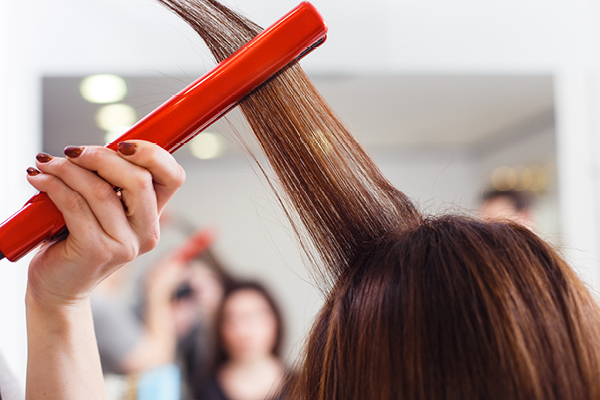
Read Labels and Ingredient Lists:
- Active Ingredients: Look for products with beneficial ingredients like argan oil, shea butter, keratin, and aloe vera, which suit your specific hair needs.
- Avoid Fillers: Steer clear of products with high concentrations of alcohols, synthetic fragrances, and dyes, as these can cause dryness and irritation.
Trial and Error:
- Patch Test: Always patch test new products to ensure they don’t cause irritation.
- Small Sizes: Consider buying travel or sample sizes first to test if a product works well for your hair without committing to a full-size bottle.
Consult a Professional:
- Hair Stylist: Ask your hairstylist for product recommendations tailored to your hair type and concerns. They can provide insights into what products and brands work best for your specific needs.
Improper Use of Hair Ties
Mistake: Using tight hair ties or elastic bands can cause breakage, hair loss, and even damage the hair cuticle. Constantly pulling hair back tightly can also lead to tension and stress on the scalp and hair follicles.
Solution:
Use Fabric-Covered Hair Ties or Scrunchies:
- Gentle on Hair: Fabric-covered hair ties and scrunchies are gentler on the hair, reducing the risk of breakage and damage. They distribute pressure more evenly and are less likely to cause kinks or indentations.
- Avoid Elastic Bands: Steer clear of plain elastic bands, which can snag and pull on the hair, leading to breakage.
Avoid Pulling Hair Too Tightly:
- Loose Hairstyles: Opt for looser hairstyles that don’t pull excessively on your hair and scalp. Tight ponytails, buns, or braids can cause tension, leading to breakage and even hair loss over time.
- Change Placement: Vary the placement of your ponytail or bun to avoid putting constant stress on the same area of your hair and scalp.
Use Appropriate Hair Ties:
- Silk or Satin Scrunchies: These are especially gentle and can reduce friction and breakage, making them ideal for all hair types, particularly for those with fine or fragile hair.
- Spiral Hair Ties: Spiral hair ties, often made of plastic, can hold hair securely without causing as much tension and breakage as traditional elastic bands.
Be Gentle When Tying and Removing:
- Avoid Snagging: Be gentle when tying and removing hair ties to avoid snagging and pulling. If your hair tie gets tangled, carefully work it out rather than pulling.
- Use Detangling Spray: Apply a detangling spray or leave-in conditioner to your hair before tying it up to make it easier to remove hair ties without causing breakage.
Avoid Hair Ties When Wet:
- Wet Hair is Fragile: Hair is more fragile when wet and more susceptible to breakage. Avoid tying up wet hair tightly. Instead, use a loose tie or clip if you need to secure it while it dries.
Regular Hair Care:
- Conditioning: Regularly condition your hair to keep it moisturized and less prone to breakage. Use deep conditioning treatments periodically to strengthen and protect your hair.
- Trim Split Ends: Regular trims help keep your hair healthy and prevent split ends from traveling up the hair shaft, reducing overall breakage.
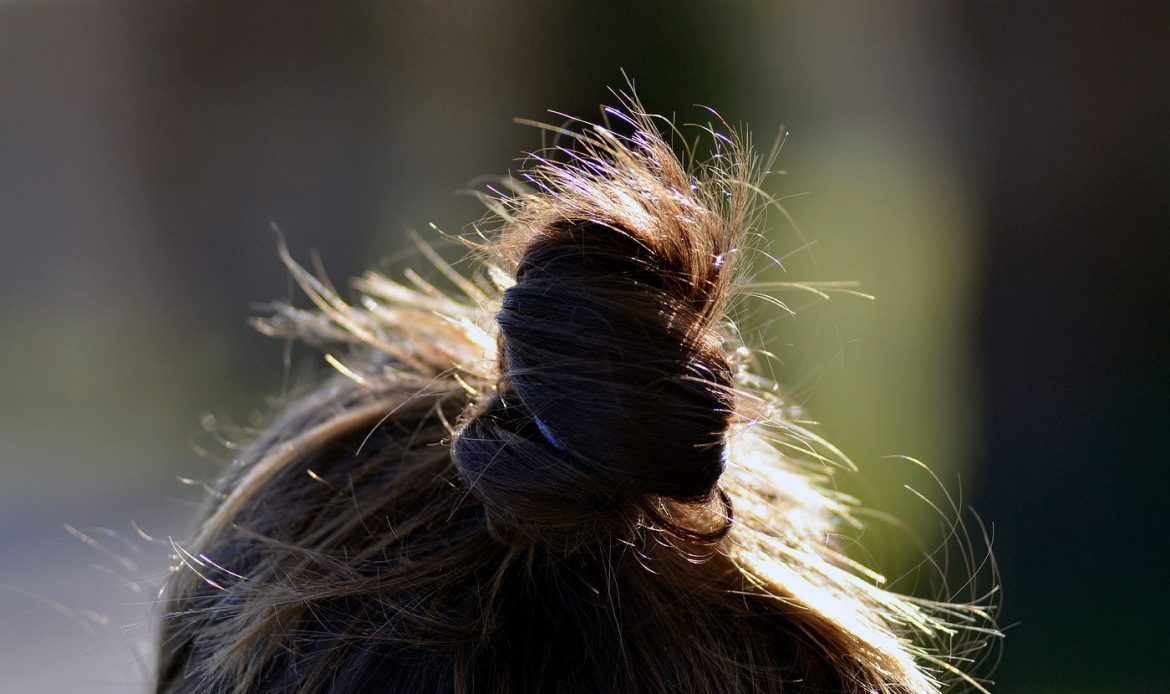
Sleeping with Loose Hair
Mistake: Sleeping with your hair down can cause tangling, breakage, and friction damage. As you move during sleep, your hair can become knotted and matted, leading to increased breakage when you try to detangle it in the morning.
Solution:
Tie Your Hair in a Loose Braid or Ponytail Before Bed:
- Loose Braid: A loose braid helps keep your hair contained and reduces tangling. It’s especially effective for long hair and can help maintain the integrity of curls and waves.
- Loose Ponytail: A low, loose ponytail can also help keep your hair under control while you sleep. Use a fabric-covered hair tie or a scrunchie to avoid damage.
Use a Silk or Satin Pillowcase:
- Reduce Friction: Silk or satin pillowcases create less friction compared to cotton ones, reducing the risk of hair breakage and tangles.
- Smooth Surface: These pillowcases are smoother, which helps to maintain your hair’s moisture and prevent frizz.
Use a Hair Bonnet or Scarf:
- Protection: Wearing a silk or satin hair bonnet or wrapping your hair in a silk scarf provides extra protection against friction and keeps your hairstyle intact.
- Secure Fit: Ensure the bonnet or scarf fits well but is not too tight, to avoid pressure on your scalp.
Moisturize Before Bed:
- Leave-In Conditioner: Apply a leave-in conditioner or a light hair oil before bed to keep your hair moisturized and more manageable in the morning.
- Avoid Heavy Products: Use lightweight products to avoid a greasy look and feel.

Forgetting to Protect Hair from the Sun
Mistake: UV rays from the sun can damage hair, leading to dryness, brittleness, color fading, and overall dullness. Just like your skin, your hair needs protection from the sun to maintain its health and appearance.
Solution:
Use Hair Products with UV Protection:
- UV Protection Sprays or Serums: Apply a hair product specifically formulated with UV protection. These products create a barrier against UV rays, reducing damage and color fading.
- Leave-In Conditioners with UV Filters: Many leave-in conditioners contain UV filters that can help protect your hair from sun damage while keeping it moisturized.
Wear Hats or Scarves:
- Wide-Brimmed Hats: Wear wide-brimmed hats that shade your hair and scalp from direct sunlight. This provides excellent protection against UV rays.
- Scarves or Head Wraps: If hats aren’t your style, wrap a scarf or head wrap around your hair to shield it from the sun’s rays.
Limit Sun Exposure:
- Seek Shade: When possible, stay in the shade to minimize direct exposure of your hair to UV rays.
- Avoid Peak Sun Hours: The sun’s rays are strongest between 10 AM and 4 PM. Try to avoid prolonged sun exposure during these hours.

Protect Your Scalp:
- Apply Sunscreen: If you’re not wearing a hat, apply a sunscreen designed for the scalp to protect it from sunburn.
- Part Hair Differently: Vary your hair parting to ensure your scalp gets equal protection from the sun.
Maintain Hair Health:
- Regular Conditioning: Keep your hair well-conditioned to help protect it from sun damage. Deep conditioning treatments can also help repair any existing damage.
- Avoid Overwashing: Washing your hair too frequently can strip away natural oils that help protect your hair from UV damage.
Protect Color-Treated Hair:
- Color-Safe Products: If you have color-treated hair, use products specifically formulated to protect color from fading due to sun exposure.
- Use a UV-Protective Spray: Apply a UV-protective spray or serum before going out in the sun to maintain vibrant color.
Hydrate Your Hair:
- Drink Water: Hydrate your body by drinking plenty of water throughout the day, which supports overall hair health.
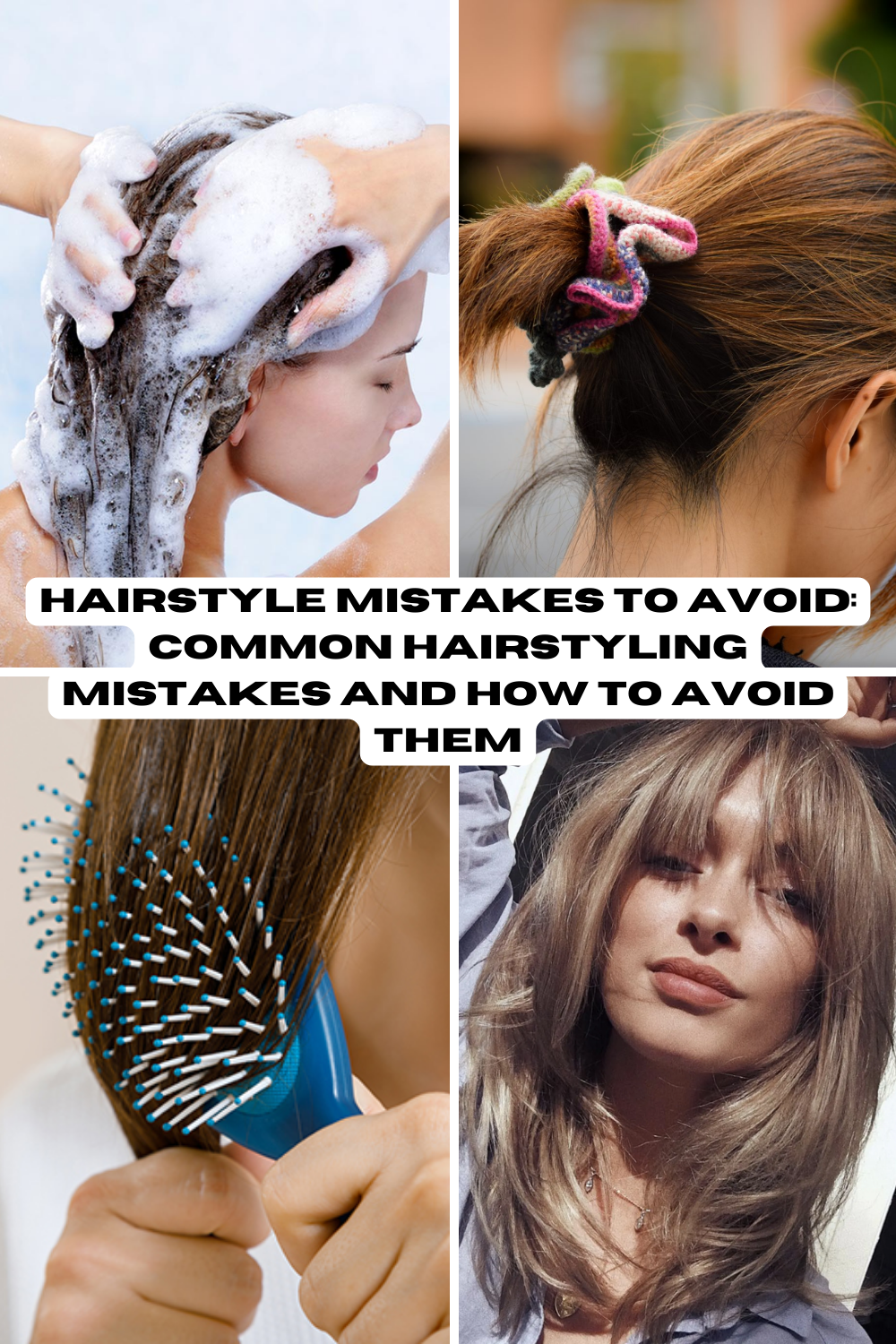

Hi my family member I want to say that this post is awesome nice written and come with approximately all significant infos I would like to peer extra posts like this